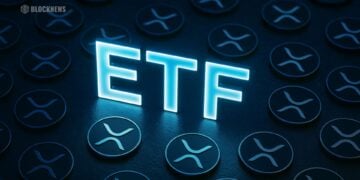- Crypto analyst Pumpius believes XRP can hit $10,000 based on macro instability, real-world asset tokenization, and Ripple’s institutional reach.
- He argues XRP’s limited supply and fast settlement mechanics could drive explosive growth if it captures even small slices of global financial flows.
- Critics say that market cap math makes the target unrealistic, but supporters claim XRP’s use as infrastructure, not just an asset, changes the equation entirely.
In a tweet thread that’s making waves, a prominent XRP supporter going by “Pumpius” threw out a jaw-dropping take: XRP hitting $10,000 isn’t wild speculation—it’s basic economics. According to him, with the right mix of macro turmoil, institutional infrastructure, and real-world asset tokenization, XRP could become the backbone of a new financial era.
Sounds far-fetched? Maybe. But Pumpius builds his case layer by layer, pointing to U.S. debt, dollar devaluation, and a ticking clock on fiat stability as catalysts. His idea: as the traditional system strains, value will flood into alternatives—and XRP is built to absorb it.
From Broken Fiat to Tokenized Assets: The Case for XRP
Pumpius starts by zooming out. He claims the U.S. dollar has lost more than 96% of its value since 1971, when it was unhooked from gold. At the same time, U.S. debt has ballooned to over $34 trillion—and interest payments alone top $1 trillion per year. That’s not sustainable, he argues. The Fed will have to keep printing, devaluing the dollar even more in the process.
Now add to that the rise of tokenized real-world assets (RWAs). Heavyweights like BlackRock and JPMorgan are building the rails to tokenize everything from real estate to carbon credits. Some analysts say this market could balloon to over $30 trillion by 2030. Those assets will need lightning-fast, cross-border settlement—and XRP’s low fees and built-in DEX make it a prime candidate, according to Pumpius.
Ripple’s Global Network Is Already in Place
But it’s not just theory—Pumpius insists Ripple has the real-world infrastructure ready to go. RippleNet, which connects more than 300 financial institutions, already uses XRP for cross-border payments through its rebranded On-Demand Liquidity (ODL) service. Ripple has also launched RLUSD, a stablecoin designed to move big money on the XRP Ledger.
With all this infrastructure, the XRP Ledger could evolve into the financial plumbing of the next generation, especially if traditional systems hit a wall. Pumpius thinks people focused on XRP’s past price action are missing the bigger picture entirely.
So… $10,000 XRP? Let’s Talk Numbers
Here’s where things get spicy. Pumpius maps out a scenario using something called a monetary velocity model. If XRP captures even a sliver—say, 10%—of massive financial flows like forex and global debt, and cycles those funds rapidly, price could shoot up fast. Add in the token’s limited supply, and $10K per coin starts to look… less impossible?
Now sure, skeptics argue that would give XRP a market cap in the quadrillions—way more than the entire global economy. But defenders counter that using traditional market cap math for a utility token like XRP is missing the point. If XRP moves funds, not stores them, its value isn’t capped the same way.
For now, XRP is trading around $2.20. A climb to $10,000 would mean a 454,000% return. Most would call that crazy. Pumpius would say ignoring the setup is what’s truly crazy.














